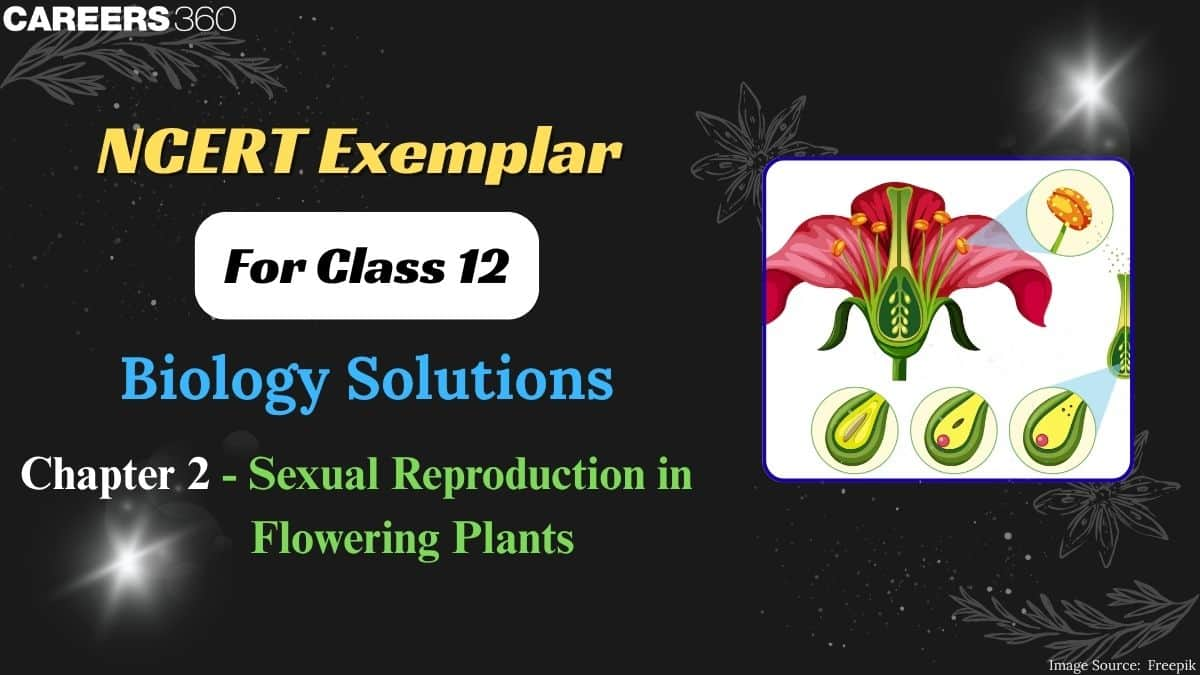Did you know that over 80% of all plant species reproduce through sexual reproduction involving flowers? The NCERT Exemplar Class 12 Biology Solutions Chapter 2 Sexual Reproduction in Flowering Plants talks about how plants reproduce using flowers. It includes topics like pollination, fertilisation, seed and fruit formation, and all the steps involved. It covers important terms like microsporogenesis, megasporogenesis, double fertilisation, and more. With these NCERT Exemplar Solutions, it becomes easier to study and revise the chapter properly.
This Story also Contains
- Find Answers of NCERT Exemplar Class 12 Biology Chapter 2 (Multiple Choice Questions)
- Get Answers to NCERT Exemplar Class 12 Biology Chapter 2 (Very Short Answer Questions)
- Access Answers to NCERT Exemplar Class 12 Biology Solutions Chapter 2 (Short Answer Questions)
- Know Answers to NCERT Exemplar Class 12 Biology Solutions Chapter 2 (Long Answer Questions)
- Approach to Solve Questions of NCERT Exemplar Class 12 Biology Solutions Chapter 2
- Important Topics of Sexual Reproduction in Flowering Plants Class 12 NCERT Exemplar
- Advantages of NCERT Exemplar Class 12 Biology Chapter 2 Solutions
- Important Questions from Sexual Reproduction in Flowering Plants Class 12 NCERT Exemplar
- NCERT Exemplar Class 12 Biology Chapter Wise Links

The NCERT Exemplar Solutions for Class 12 Biology have all types of questions like MCQs, short answers, long answers, and diagrams. The questions are made to cover all important points. The answers are simple and step-wise, so it’s easy to follow and learn. It helps to clear the chapter and prepare well for the exams. They save time during revision and also give an idea of how questions can be asked in exams. With regular practice of the NCERT Exemplar Class 12 Biology Chapter 2, students can get better marks and feel more confident.











